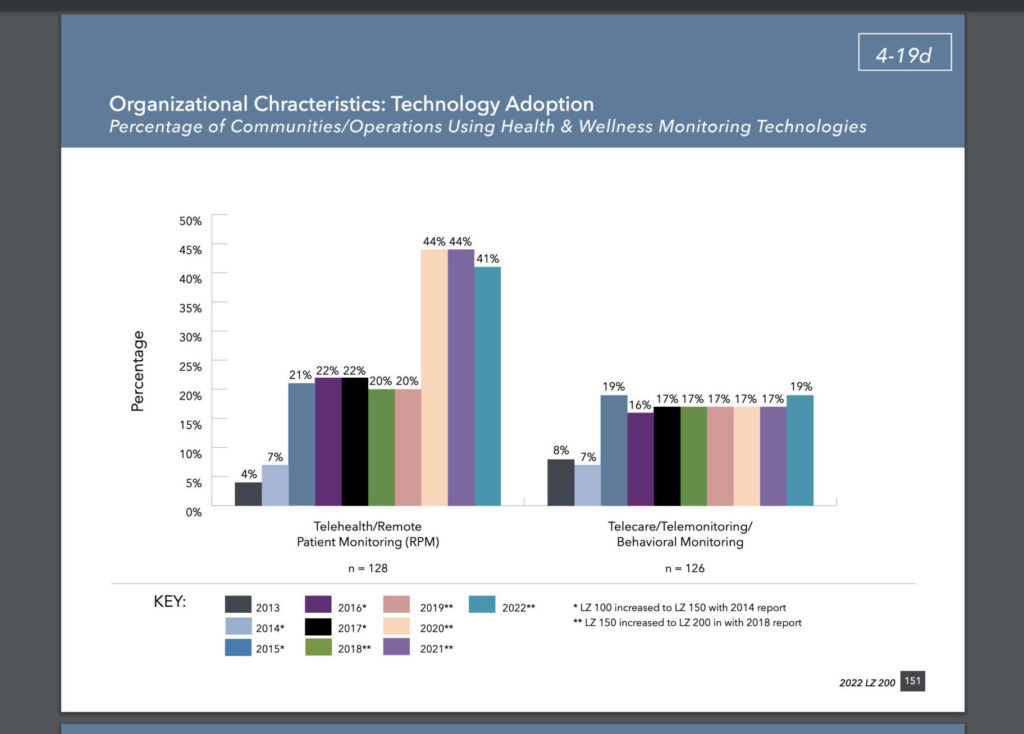
Use of physical therapy and rehabilitation technology among the nation’s largest nonprofit providers of senior living and care increased significantly in the pandemic’s second year, while telehealth and remote patient monitoring use declined after exploding at COVID’s outset, the latest LZ200 report found.
Use of rehabilitation and physical exercise technologies increased from 44% in the 2020 report to 59% in the 2021 report, and dropped to 56% for the 2022 report. The 2019 report showed the use of telehealth and remote patient monitoring at 20%; it jumped to 44% in the 2020 report and stayed there for the 2021 report before dropping to 41% in the 2022 report.
Meanwhile, the use of social connectedness and engagement technology dropped from 66% in the 2020 report and 2021 report to 57% in the 2022 report, which reflects data through the end of 2021. The use of wander management/access control systems dropped from 76% in the 2019 report to 68% in the 2020 report and 2021 report and 62% in the 2022 report.
The LZ200, co-published by investment bank Ziegler and LeadingAge, began tracking the use of technology for infection control in 2020. While half of all providers reported using some such tool that first year, that dropped a bit to 48% in the latest report. Likewise, the use of tech for staffing and resident screening, also tracked since 2020, dropped from 51% the first two years to 49% in the latest year’s data.

Researchers have cautioned in the past, however, that small data changes may be more a reflection of the changes to the top provider lists rather than a full-blown trend.
The percentage of communities using technology for medication monitoring in this year’s report rose, for instance, rose sharply from the 2020 report to the 2021 report, growing from 17% to 56%, before dropping to 54% in the latest findings.
“On average, 65% of the LZ200 communities have adopted electronic point of care/point of service documentation systems and electronic health/medical records,” the report noted. “Adoption is generally lower for health and wellness technologies, such as medication monitoring or telehealth remote monitoring; and care/case management and coordination reveals that 57% use this software.”
But Ziegler also noted that of the 150 largest single campus sites, 97.5% use an electronic medical health records system.
More specifically, 97.5% have electronic point of care/point of service documentation systems; 93.4% use access control/wander management systems; 87.3% have technology systems for physical therapy and rehabilitation; 78.3% use technology for resident social connectedness/engagement; 76.5% have medication management systems; 74.6% use care/case management and coordination software tools; and 47% use telehealth/ remote patient monitoring.
Of robot technology users, 57% report robotic process automation and 43% use physical robots.




